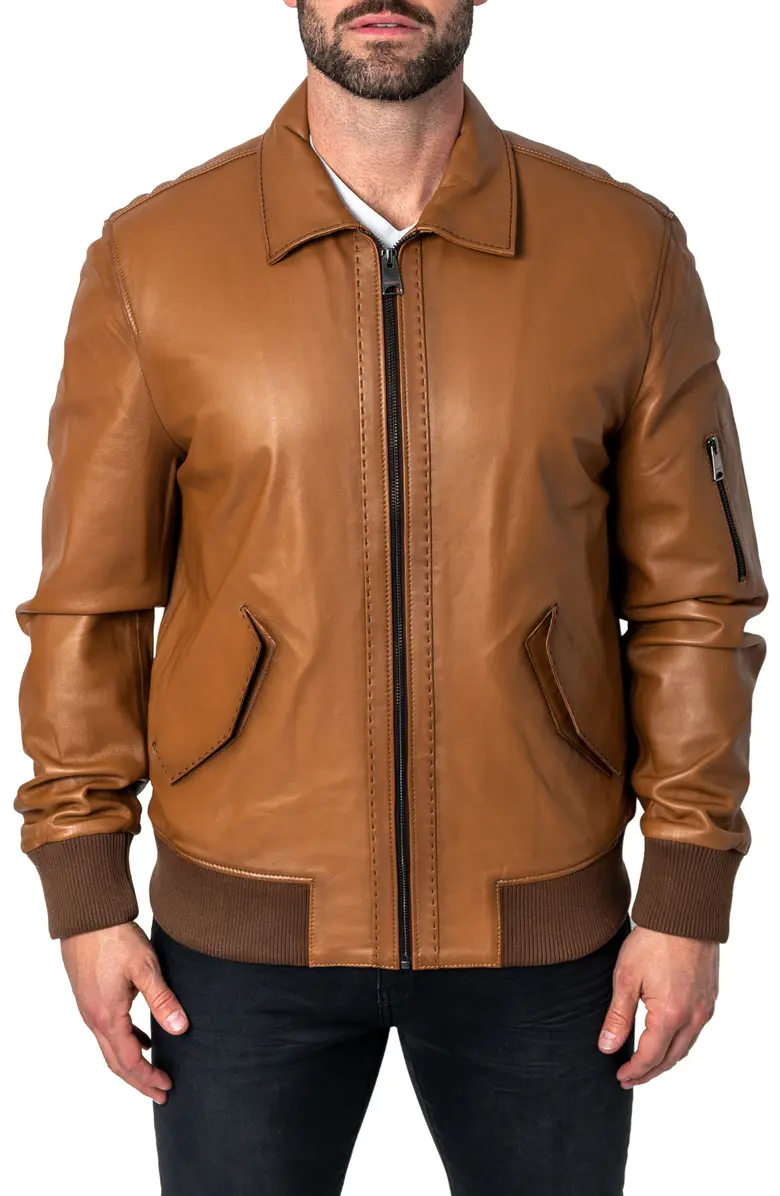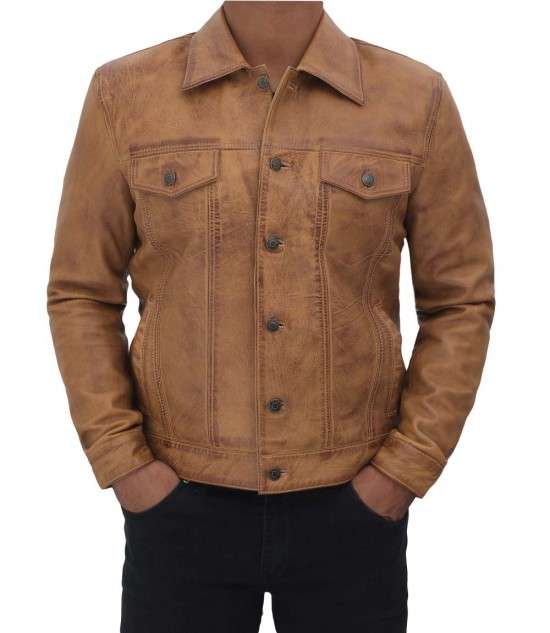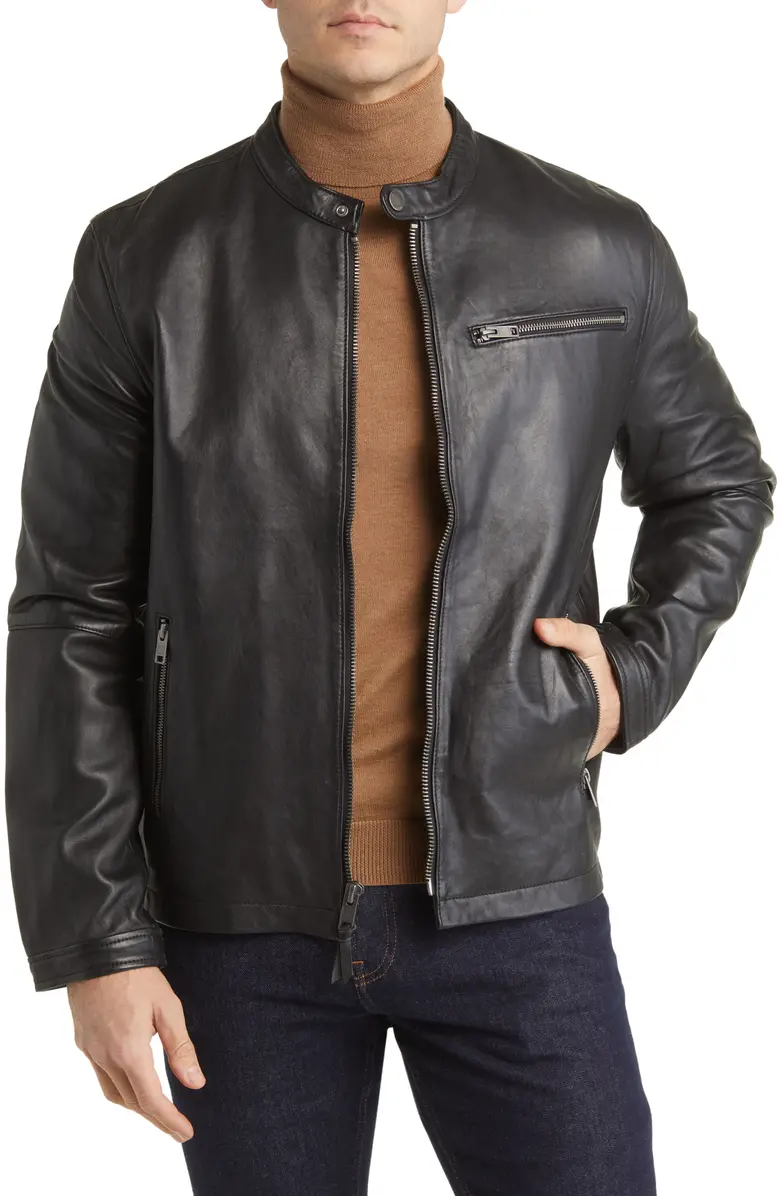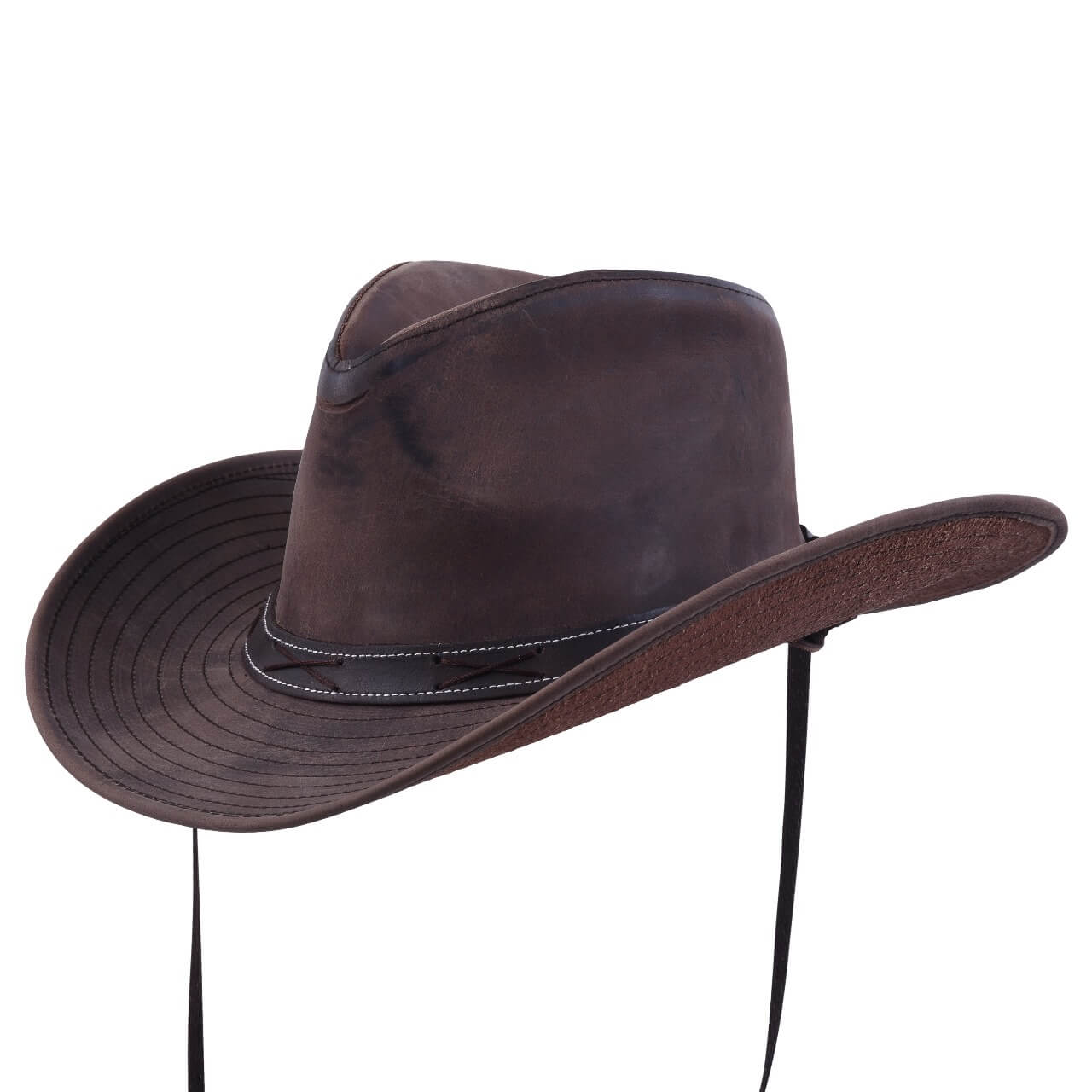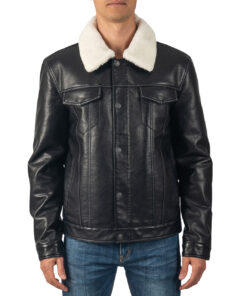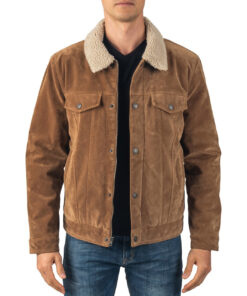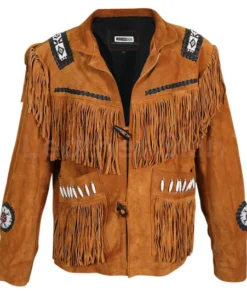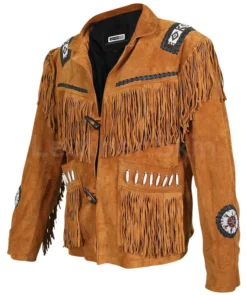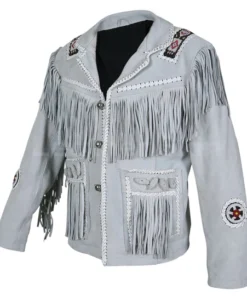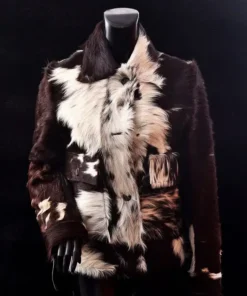For a very long time, men’s western leather bomber jacket has been associated with the wild spirit of the American West, rugged individuality, and adventure. These classic pieces of clothing have undergone a transformation, all the while retaining their own charm and attractiveness, from their modest beginnings as useful workwear to their current standing as a fashion staple.
The Background of Western Leather Jackets
The American frontier was at its height in the late 19th century, which is when the history of leather western jackets started. The American West required hardy, protective clothing that could survive the demanding conditions of daily life for laborers such as cowboys and ranchers. The best material for this indian jacket was leather because of its inherent hardness and water resistance.
The original western leather jackets were straightforward, practical pieces that frequently had a collar for wind protection, a buttoned front, and perhaps a sheepskin inside for extra warmth. Typically, cowhide or horsehide, which were easily obtainable and renowned for their toughness, were used to make these fringed leather jacket.
Western jackets made of leather started to evolve from strictly practical workwear to fashionable accessories as the 20th century went on. Hollywood westerns, which idealized the cowboy way of life and made western apparel such as western leather jackets with fringe, popular among the masses, had a significant impact on this change. Legendary performers like Clint Eastwood, Gary Cooper, and John Wayne contributed to the native american jacket reputation as an emblem of tough masculinity and adventure.
The leather cowboy jacket underwent additional development in the 1950s and 1960s as it began to be identified with a rebellious young culture. Cowboy leather jackets were portrayed as the go-to look for rebels and free spirits in films such as Dennis Hopper and Peter Fonda’s “Easy Rider” (1969) and Marlon Brando’s “The Wild One” (1953).
Because of their adaptability, toughness, and classic look, leather western jackets are still in trend today. From rockabilly to high fashion runways, cowboy jackets have found acceptance among a wide range of subcultures and fashion styles, solidifying their status as genuine American classics.
Western Leather Jacket Styles
Over time, new types of suede fringe jacket have arisen to suit diverse tastes and purposes, but the basic silhouette of the jacket has stayed essentially constant. These are a few of the most well-liked looks:
Classic Western Jacket: This design, which has a pointed collar, a button-up front, and a basic cut with ornamental stitching or western jackets with fringe, is quite similar to the original cowboy jackets.
Bomber-Style Western Jacket: This design, which combines western style leather coats and bomber jacket components, is usually more fitting, with a zipped front, ribbed cuffs and waistband.
Moto Jackets: Motorcycle culture served as the inspiration for the Biker Western Jacket, which frequently has a more form-fitting cut, studs, and asymmetrical zippers.
Fringe Western Jacket: Traditionally used in western fashion, fringe jackets have long leather strips dangling from the back, sleeves, and occasionally the chest, giving the ensemble a dramatic, dynamic appearance.
Tailored Western Jacket: A slimmer, more fitting silhouette is combined with western characteristics in a more modern rendition that is frequently seen in high-end design shows.
Distressed Western Jacket: These cowboy coats are popular with people who like a more rugged appearance because they are purposefully worn-in or aged to give them a vintage appearance.
Leather Types for Western Jackets
The look, feel, and durability of a fringe suede jacket can all be greatly influenced by the kind of leather used in it. The following are some typical leather kinds found in western jackets:
Cowhide: Known for its resilience and capacity to acquire an exquisite patina over time, cowhide is the most widely used and adaptable type of leather.
Horsehide: Historically utilized in a lot of western coats, horsehide is incredibly resilient and gets a certain sheen with age.
Bison Leather: Bison leather is becoming more and more popular for western jackets because of its unique grain pattern and remarkable endurance.
Goatskin: Offering superior toughness in a softer packaging, goatskin is lighter and more supple than cowhide.
Sheepskin: Sheepskin offers superior warmth and comfort and is frequently used as lining or in shearling jackets.
Deerskin: Exceptionally supple and smooth, deerskin produces opulent fringe leather coat with a buttery texture.
Suede: Unlike smooth leather, suede needs more upkeep. It is a soft, velvety material made from the underside of animal hides used to make a leather suede jacket.
How to Wear Western Jackets in Leather
The adaptability of jacket native american is one of their main benefits. They are appropriate for a variety of settings and may be worn up or down. The following are some styling suggestions for a leather western jacket:
Casual Look: For a timeless, carefree look, team your jacket with a basic t-shirt, jeans, and boots. This style is ideal for daily wear and suits both men and western leather jackets for women.
Smart Casual: Try layering your jacket over a button-up shirt and dark slacks or chinos for a somewhat dressier appearance. To finish the look, add some ankle boots or leather shoes.
Edgy Style: For a striking, rock-inspired ensemble, pair your leather western jacket with all-black clothing. Combat boots, a black t-shirt, and black slim jeans look great with this look.
Bohemian Chic: For a carefree, bohemian style, ladies can team a flowing maxi dress with ankle boots and a fringe leather western jacket.
Office Appropriate: A well-tailored leather western jacket can, surprisingly, look good in some office settings. For a distinctive take on work casual, team it with dress pants or a pencil skirt, a clean white shirt, and sophisticated shoes.
Layered Look: For extra warmth and flair in chilly weather, wear your western leather blazer layered over a jumper or sweatshirt. This looks especially well with country western jackets in the bomber style.
Accessorizing is important, so remember to do it! You can finish off your outfit with a striking necklace, a bandana, or a belt in the western style that matches your jacket.
Remember that the secret to dressing a leather western jacket well is to counterbalance its striking features with more subdued ensembles. Make the western leather coat the focal point of your ensemble by selecting complimentary pieces that don’t draw attention away from it.
How to Take Care of Your Western Leather Jacket
You must take excellent care of your western leather jacket mens if you want it to last for many years as a treasured piece in your wardrobe. Here are a few fundamental pointers:
Routine Maintenance: Use a moist towel to dust and clean your western jacket leather. Use a leather cleaner made especially for your kind of leather for more stubborn stains.
Conditioning: To keep the leather supple and stop it from cracking, apply a leather conditioner every few months.
Storage: Keep your jacket in a cool, dry location on a cushioned hanger. Keep your clothes out of plastic bags since they might retain moisture.
Waterproofing: To keep your western leather jacket mens dry and safe from snow and rain, think about using a waterproofing spray.
Expert Care: Consult a professional leather cleaner if there are noticeable stains or damage on your western wear jackets.
In summary
Beyond just a piece of apparel, western leather jackets are a symbol of timeless style and a part of American heritage. There’s a western leather jacket out there for everyone, whether you like the rugged appeal, the way they relate to cowboy culture, or just the classic cool aspect. You may choose the ideal western buy mens leather fringe jacket to represent your own style and last for years in your closet by learning about the origins, fashions, and maintenance needs of these iconic pieces of western leather clothing.




